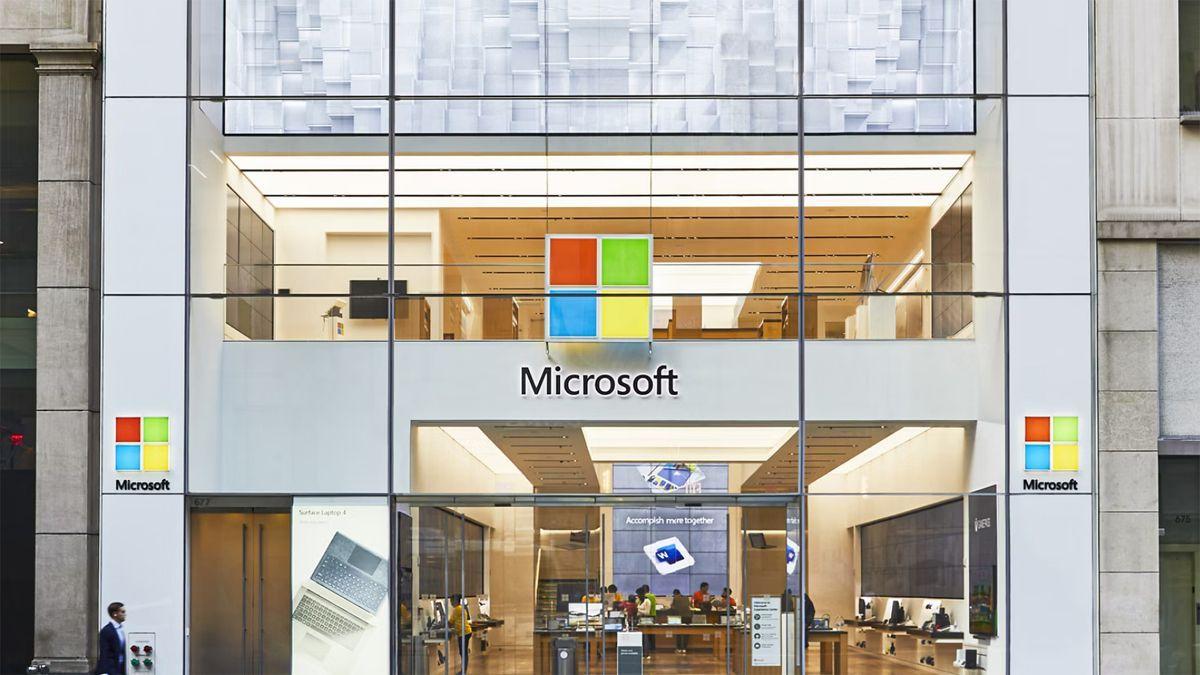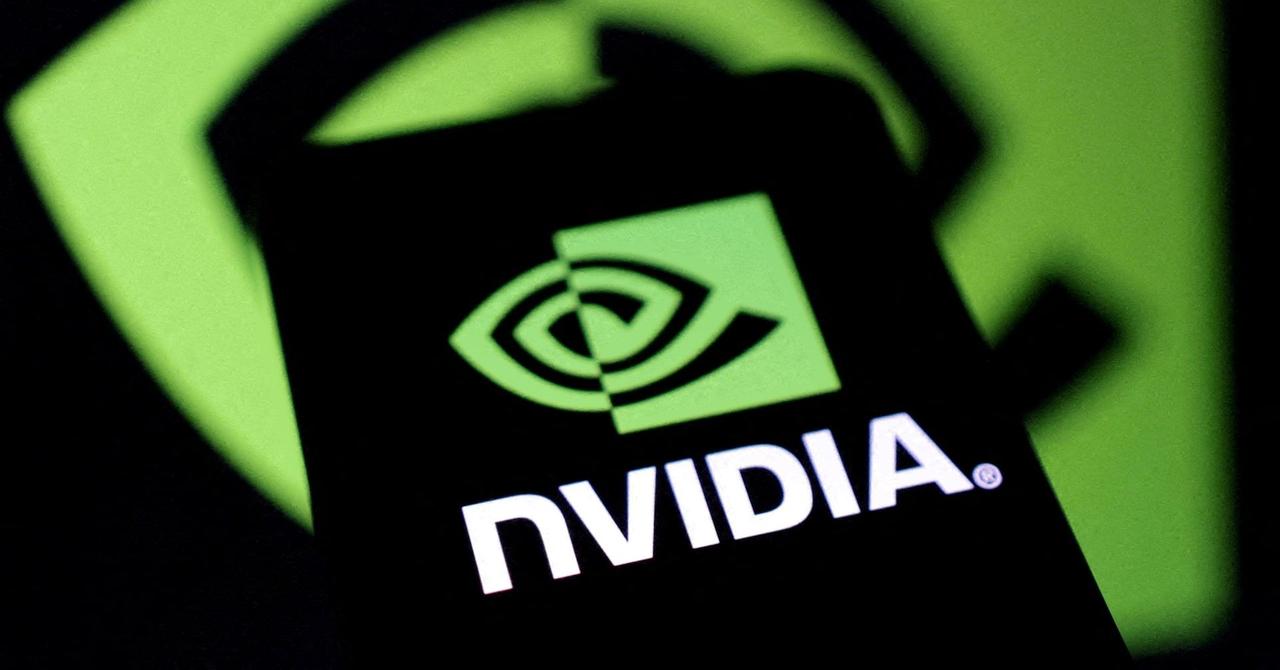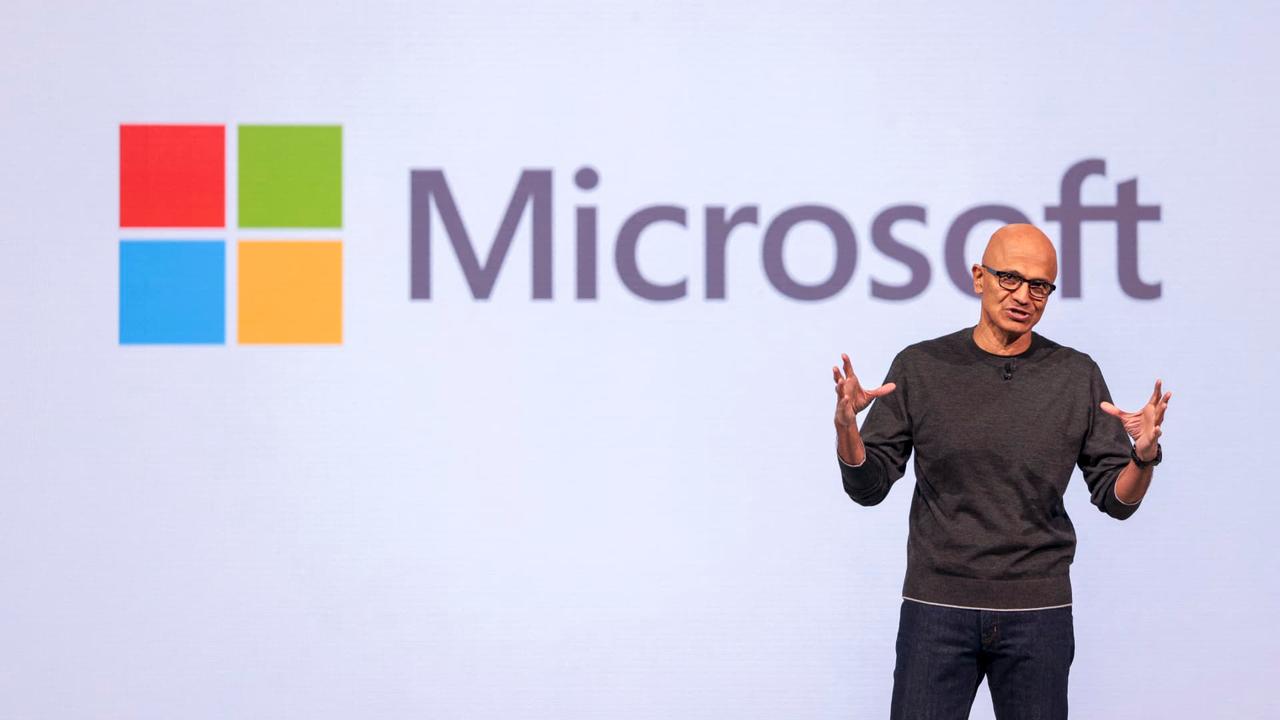Microsoft Poised to Join $4 Trillion Club, Driven by AI and Cloud Growth
6 Sources
6 Sources
[1]
Wedbush's Dan Ives predicts the next $4 trillion market cap stock -- one Cramer also likes
It's all aboard for Microsoft investors as the company rides the next train towards another major win. The news Microsoft will be the next megacap to hit a $4 trillion stock market value, according to Wedbush, which predicts it will happen "this summer." Larger-scale artificial intelligence deals are accelerating, lead analyst Dan Ives wrote in a note to clients Thursday. "Many Microsoft customers [are] now focused on deploying enterprise use cases across a number of verticals with financials, government, and retail clear standouts," he added. Even with Microsoft shares closing Wednesday at a record high of just over $503 each, Ives said the Club stock "still has yet to price in" the upcoming wave of cloud and artificial intelligence growth and its ability to keep a competitive edge even against other big players like Alphabet and fellow Club name Amazon . A less than $40 per share move higher in Microsoft stock would take it over $4 trillion. MSFT YTD mountain Microsoft YTD Wedbush on Thursday also raised its 12-month Microsoft price target to $600 per share from $515 -- implying 19% upside to the prior closing price. That PT would push Microsoft well on its way to $5 trillion, which Ives thinks could happen over the next 18 months. He maintained his outperform buy rating on the stock. Big picture It's no surprise that Wedbush thinks Microsoft will soon join Nvidia , which on Wednesday became the first company even to enter the $4 trillion club. Shares of Nvidia, also a major portfolio name and AI leader, did not close there. However, some late-session strength Thursday could give it a shot. As for Microsoft, the Street has dramatically changed its tune following its stellar earnings beat after the market closed on April 30. The quarter crushed speculation about slowing Azure cloud growth and a deceleration in AI. The stock was already swinging higher from its lowest 2025 close on April 8, which happened before President Donald Trump paused his "reciprocal" tariffs. Shares experienced an earnings-driven 7.6% rally on May 1 and have hardly looked back since. Last week, Microsoft announced its biggest round of layoffs of the year, which should help control costs as the company continues to spend on AI within cloud. Ives pointed out Microsoft's "capex guidance of $80 billion for FY25 and continuing to grow into FY26 as MSFT looks to continue its data center buildouts to keep pace with scaling laws and capitalize on strong demand trajectory." Bottom line Jim Cramer has been feeling much better about Microsoft recently, adding the stock to his latest acronym, M-N-M (like M & M, get it). The others are Nvidia and Meta Platforms . (Jim Cramer's Charitable Trust is long MSFT, NVDA, META, AMZN. See here for a full list of the stocks.) As a subscriber to the CNBC Investing Club with Jim Cramer, you will receive a trade alert before Jim makes a trade. Jim waits 45 minutes after sending a trade alert before buying or selling a stock in his charitable trust's portfolio. If Jim has talked about a stock on CNBC TV, he waits 72 hours after issuing the trade alert before executing the trade. THE ABOVE INVESTING CLUB INFORMATION IS SUBJECT TO OUR TERMS AND CONDITIONS AND PRIVACY POLICY , TOGETHER WITH OUR DISCLAIMER . NO FIDUCIARY OBLIGATION OR DUTY EXISTS, OR IS CREATED, BY VIRTUE OF YOUR RECEIPT OF ANY INFORMATION PROVIDED IN CONNECTION WITH THE INVESTING CLUB. NO SPECIFIC OUTCOME OR PROFIT IS GUARANTEED.
[2]
AI optimism pushes Microsoft above $500/share -- will it be next to join the $4 trillion club?
Microsoft shares closed above $500 for the first time Wednesday -- a symbolic milestone as Wall Street increasingly bets on its role in the AI boom. The Redmond company's market value is more than $3.7 trillion, and Wedbush analysts predicted Thursday morning that the company is on its way to a $4 trillion valuation. That was a mark briefly reached by Nvidia earlier this week, driven by demand for its AI chips. "We believe Microsoft will also hit the $4 trillion market cap club this summer and then over the next 18 months the focus will be on the $5 trillion club," wrote Wedbush analyst Dan Ives and colleagues in a note to clients, saying they believe the AI-driven tech bull market is still in its early phases. Microsoft is making AI investments across cloud services, including Microsoft Copilot, Office and GitHub. It also continues to benefit from its high-profile partnership with OpenAI, even as that relationship evolves. It's spending heavily on AI infrastructure with $80 billion in annual capital expenditures in its recently completed fiscal year. At the same time, Microsoft has been shedding jobs, cutting around 15,000 positions over the past few months, citing a desire to boost efficiencies. Speaking with reporters on Wednesday, Microsoft President Brad Smith said AI was "not a predominant factor" in the job cuts. Microsoft saved more than $500 million last year using AI in its call centers, while also boosting employee and customer satisfaction, according to a Bloomberg News report, citing an internal presentation by Chief Commercial Officer Judson Althoff. In its latest AI initiative, Microsoft on Wednesday announced a $4 billion commitment over five years to help schools and nonprofits adopt AI through a new program called Microsoft Elevate. The program, which includes cash and technology donations, aims to train 20 million people in AI skills over the next two years.
[3]
Microsoft Headed For $4 Trillion Market Cap This Summer - Microsoft (NASDAQ:MSFT)
As Nvidia NVDA makes history by achieving a $4 trillion market capitalization, the spotlight shifts to Microsoft MSFT, which is poised to reach this same unprecedented milestone soon. This rapid ascent for both tech giants underscores the transformative power of the AI Revolution and Microsoft's central role in shaping its future in the cloud. Wedbush analyst Daniel Ives reiterated an Outperform rating on Microsoft with a $600 price forecast on Thursday, noting the company's inclusion on Wedbush's "Best Ideas List." Ives emphasized the historical significance of Nvidia, led by "Godfather of AI" Jensen Huang, becoming the first member of the $4 trillion market cap club. He stated, "This is a historical moment for Nvidia, the tech space flexing its muscles, and it speaks to the AI Revolution hitting its next stage of growth, led by the one chip fueling AI...Nvidia." AI Revolution's "Poster Children" Ives positioned both Nvidia and Microsoft as "poster children for the AI Revolution," calling them "foundational pieces" in what he considers the biggest tech trend of his 25-year career covering tech stocks. He projects Microsoft will join the $4 trillion club this summer, with an eye on the $5 trillion club within the next 18 months, signaling that this tech bull market, driven by AI, is still in its early stages. Accelerating AI Enterprise Adoption The analyst's recent field checks reveal an "accelerating" pace of deal conversions for broader enterprise-scale AI deployments as the AI Revolution gains traction. Many Microsoft customers are now prioritizing enterprise use cases across various verticals, with financials, government, and retail emerging as clear standouts. Also Read: Microsoft's AI And Cloud Scale Drives Market-Beating Returns AI to Transform Microsoft Cloud Growth Ives strongly views this period as Microsoft's "shining moment," with AI poised to fundamentally alter the cloud growth trajectory for the Redmond-based giant. His analysis suggests that over the next three years, over 70% of Microsoft's installed base will ultimately adopt AI functionality for enterprise or commercial purposes. This widespread adoption, he believes, will significantly change the landscape and growth trajectory for CEO Satya Nadella's leadership. Fiscal 2026: AI Inflection Year While AI use cases are building notably in fiscal 2025, Ives asserts that fiscal 2026 will be the true inflection year for Microsoft's AI growth, as CIOs prepare for deployments "behind the velvet ropes in Redmond." Microsoft is strategically "doubling down" on its AI monetization strategy within the cloud, evidenced by its capital expenditure guidance of $80 billion for fiscal 2025, with continued growth into fiscal 2026. This investment aims to expand data center buildouts to keep pace with scaling laws and capitalize on the strong demand trajectory. Microsoft Leads Enterprise AI Despite increasing competition from Amazon.com AMZN Amazon Web Services and Alphabet GOOGL Google Cloud Platform, Ives identifies Microsoft as the "clear frontrunner on the enterprise hyper-scale AI front." He highlights AI as the core driver of Azure's impressive value proposition and Microsoft's advanced enterprise stack, noting that this dynamic is "just starting to take shape in the field." Untapped Growth, Copilot Impact The analyst believes the stock has yet to fully price in the upcoming "next wave of cloud and AI growth" for Microsoft, emphasizing its strong competitive cloud edge against both Amazon and Google in cloud evaluations. Recent partner checks have shown "incrementally strong" momentum around Copilot deployments with Microsoft customers, which could add an estimated ~$25 billion to Redmond's top-line revenue by fiscal 2026. AI's Multiplier Effect Crucially, Ives concluded that "the multiplier ripple impact from the Godfather of AI, Jensen, and Nvidia is just starting to be felt on the cloud or software layer as the second derivatives of the AI Revolution play out in the field." His core thesis remains that cloud and AI monetization will constitute a larger portion of Microsoft's business going forward, ultimately spurring growth and margins in the coming years. Ives projects Microsoft's fourth-quarter revenue at $73.77 billion and EPS at $3.34. Price Action: MSFT stock is trading lower by 0.64% to $500.30 at last check Thursday. Read Next: Taiwan Semiconductor Reports Solid Half-Year Revenue, June Sees Monthly Decline Photo via Shutterstock MSFTMicrosoft Corp$500.95-0.51%Stock Score Locked: Want to See it? Benzinga Rankings give you vital metrics on any stock - anytime. Reveal Full ScoreEdge RankingsMomentum69.67Growth49.85Quality32.97Value13.14Price TrendShortMediumLongOverviewAMZNAmazon.com Inc$222.590.02%GOOGLAlphabet Inc$178.040.81%NVDANVIDIA Corp$164.030.71%Market News and Data brought to you by Benzinga APIs
[4]
Prediction: This Will Be The Next $4 Trillion-Dollar Stock | The Motley Fool
Nvidia (NVDA 0.53%)has been firing on all cylinders over the past two years, and the company just added one more accomplishment to its long list of medals: The chipmaker became the first stock to hit the $4 trillion mark. It now sits as the most valuable company in the world, but others are close behind. Other corporations will eventually reach that valuation too, perhaps even sooner than many think. And the stock most likely to get to $4 trillion next is Microsoft (MSFT 0.39%). Read on to find out why. Most of the members of the "Magnificent Seven" have market caps above $1 trillion, but some are much closer to the $4 trillion mark than others. The two largest companies behind Nvidia are Apple, valued at $3.16 trillion, and Microsoft, at $3.72 trillion. The others are much further behind. And while there's the possibility that they will soar while these two drop, assuming they all perform relatively similarly in the next few months, Microsoft will get there first simply because it's the closest. However, Microsoft has an excellent chance of performing better than, at the very least, its closest competitor, Apple. The iPhone maker has been hit hard this year due to the current U.S. administration's trade policies. The Trump administration aims to bring manufacturing back to the United States, which poses a challenge for Apple, as the company outsources most of its manufacturing to countries such as China, a favorite target of Trump's aggressive tariffs, and other Asian nations. Trump recently doubled down on his threat of aggressive tariffs. Additionally, Apple has fallen behind Microsoft and its tech peers in the artificial intelligence (AI) race. While I think Apple could still perform well over the long run, the company's short-term prospects don't look attractive. What about Microsoft? The tech leader delivered excellent results during its latest update, which covered the third quarter of its fiscal year 2025, ending on March 31. Microsoft's cloud computing and AI businesses are booming. It has been gaining ground on Amazon in the competitive cloud field. Further, the company's latest update provided strong guidance, indicating a growing demand for its services, despite a somewhat shaky macroeconomic environment. The smart money is on Microsoft outperforming Apple in the next few months. Amazon, Alphabet, and Meta Platforms are also performing well, but with market caps of $2.36 trillion, $2.15 trillion, and $1.82 trillion, they are too far behind to make serious runs at the $4 trillion mark before Microsoft. For all these reasons, Microsoft seems by far the most likely to join Nvidia in the $4 trillion single-company (for now) club next. $4 trillion isn't a finish line. Once Microsoft reaches that point -- whenever that may be -- there will still be plenty of upside left for the company afterward. In fact, here is another prediction: Microsoft will reach a $10 trillion valuation within the next decade. From its current levels, that would require a compound annual growth rate of at least 10.4%. That's no easy feat, but Microsoft can pull it off as the company continues to make headway within its two biggest sources of growth: AI and cloud computing. While the company is already generating significant sales from these businesses, this is likely still the early stages of these industries' growth stories. According to Andy Jassy, CEO of Amazon, more than 85% of IT spending still occurs on-premises. Meanwhile, AI applications reached a new level a little less than three years ago with the launch of ChatGPT by OpenAI, a Microsoft-backed company. Both technologies enable businesses across all industries to reduce costs and increase efficiency. Companies that don't use cloud computing or AI services might, eventually, become like modern businesses that don't use computers: They hardly exist. That could be the scale of the revolution investors are witnessing, and Microsoft is one of the leaders driving it. Though competition will continue to intensify, the tech giant has a strong competitive edge due to switching costs. Plus, it has already proven it can perform well despite competitive pressure from Alphabet and Amazon. Microsoft's long-term prospects look attractive thanks to this duo of massive growth drivers. Investors shouldn't buy the stock because it could soon reach $4 trillion. They should purchase it because it will likely continue performing well long after that.
[5]
Nvidia Just Became the World's First $4 Trillion Stock. This Artificial Intelligence (AI) Giant -- Which Is up 686,000% Since Its IPO -- Might Be Next. | The Motley Fool
Nvidia supplies the world's best artificial intelligence (AI) chips for data centers. Demand is heavily outstripping supply, sending the company's sales -- and its stock price -- surging over the last couple of years. In fact, on July 9, Nvidia became the first company in history to achieve a market capitalization of $4 trillion. But Microsoft (MSFT 0.39%) is nipping at Nvidia's heels in terms of valuation. Its stock has soared by a whopping 686,858% since its initial public offering (IPO) in 1986, and the company's market cap is now over $3.7 trillion. In other words, Microsoft stock needs to gain only 8% more to place the company alongside Nvidia in the $4 trillion club. Here's why its growing presence in AI software and infrastructure could fuel that move. Since 2019, Microsoft has invested around $14 billion in ChatGPT developer OpenAI. It has used the start-up's latest large language models (LLMs) to craft its own AI assistant, called Copilot, which is embedded in almost all of its flagship software products. Copilot is accessible for free through Windows, Bing, and Edge, and it's available as a paid add-on in a host of other products, creating new revenue streams for Microsoft. For instance, enterprises can add Copilot to their Microsoft 365 subscription for an additional monthly fee, where it can boost their employees' productivity in applications such as Word, Excel, and Outlook. Enterprises around the world pay for more than 400 million 365 licenses, so the Copilot add-on could generate billions of dollars in recurring revenue over time. During the fiscal 2025 third quarter (ended March 31), the number of organizations using Copilot for 365 tripled compared to the year-ago period, so uptake has certainly been rapid so far. Then there is the Copilot Studio platform, which enables organizations to create custom AI agents to suit their workflows. For example, a business can create one agent to deal with customer service queries on their website and another agent to help manage their logistics network. The platform had over 230,000 customers at the end of the fiscal 2025 third quarter, and I expect that number to climb significantly as AI adoption becomes more widespread. Microsoft's AI opportunity in the cloud might be even bigger than the opportunity created by Copilot. Its cloud computing platform, Azure, offers hundreds of digital services to enterprises, helping them with everything from simple data storage and web hosting to more complex tasks such as software development. Now, it provides a growing list of tools that enterprises need to fuel their AI ambitions. Microsoft operates centralized data centers filled with the latest graphics processing units (GPUs) from suppliers like Nvidia, and it rents the computing capacity to enterprises that use it to train and deploy AI applications. Microsoft spent over $60 billion to build AI infrastructure during the first three quarters of fiscal 2025 to meet demand. It sounds like a massive number, but CFO Amy Hood says there is an eye-popping $315 billion order backlog from customers who are waiting for Microsoft to bring more data centers online. Besides AI hardware, Azure also offers access to the latest third-party LLMs from leading developers like OpenAI. Enterprises can plug their internal data into these models to create custom AI software to suit their needs. Using a ready-made LLM is much faster (not to mention cheaper) than building a model from scratch. Azure revenue grew by 33% year over year during the fiscal 2025 third quarter, which marked an acceleration from the 31% growth it delivered in the second quarter three months earlier. AI services accounted for a record-high 16 percentage points of that growth, which highlights just how important this segment has become to Microsoft's cloud division. In fact, if not for AI, Azure's revenue growth would probably be decelerating sharply. Microsoft's $3.7 trillion market cap makes it the world's second-largest company behind Nvidia, and it's comfortably ahead of third-place Apple, which is worth $3.2 trillion. Microsoft stock isn't cheap right now, so it may take some time to gain the final 8% it needs to reach the $4 trillion milestone, but I predict it will beat Apple and every other company to the punch. At the time of this writing, Microsoft stock is trading at a price-to-earnings (P/E) ratio of 38.7, which is a premium to its five-year average of 33.4. However, Wall Street's consensus estimate (provided by Yahoo! Finance) suggests the company's earnings per share could grow by 13% during fiscal 2026 (which officially started on July 1), placing its stock at a forward P/E ratio of 33.1: In other words, Microsoft stock would have to climb by around 17% over the next 12 months just to maintain its current P/E ratio of 38.7, which isn't out of the question, considering the strong momentum in the company's AI products and services. Since the stock market is a forward-looking machine, I think it's possible for Microsoft shares to climb by 8% over the next six months or so, provided its quarterly financial results continue to come in as expected (or better). As a result, I think Microsoft is likely to be the next member of the $4 trillion club.
[6]
Microsoft: Next Stop $600 or Has the Growth Stock Run Up Too Far, Too Fast? | The Motley Fool
Microsoft (MSFT -0.01%) is over $500 a share and up 19.1% year to date at the time of this writing -- handily outperforming the S&P 500's 6.8% gain. Although Nvidia is capturing the spotlight as the first company to reach a $4 trillion market cap, Microsoft is right behind -- sporting a market cap of over $3.7 trillion. Here's what differentiates Microsoft from other investment opportunities, what it would have to do to justify a $600 share price, and some concerns that investors will want to monitor before diving headfirst into this growth stock. Microsoft continues to be arguably the most balanced tech company on the market due to its diversified business model. It's an industry leader in enterprise software through Microsoft 365, its business applications, the Windows operating system, developer tools like GitHub, gaming software, and more. It is also a cloud computing giant through the Microsoft Azure platform and its associated products and services. It also makes tech hardware like Surface devices, Xbox gaming consoles and accessories, and more. Microsoft is integrating artificial intelligence (AI) across its business segments for both consumers (through Copilot AI assistants) and for enterprises (through tools like Azure OpenAI and Azure AI services). Microsoft offers investors exposure to many different end markets under the umbrella of one company with an exceptional balance sheet, high margins, and stable cash flows. Possibly the simplest reason why Microsoft is doing so well and hovering around an all-time high is that its thriving in both the cloud infrastructure and application software niches in the age of AI. This has been no easy task, as both cloud leader Amazon and third-place player Alphabet continue to aggressively invest in their cloud computing businesses -- challenging second-place Microsoft's efforts to hold and gain market share. Smaller players like Oracle and International Business Machines are also successfully building out their cloud offerings. Investors were initially excited about the potential for enterprise software to capitalize on AI through new tools and agents that would save users time by helping them create and accomplish tasks. However, many software stocks have pulled back considerably as that optimism has moderated. Salesforce, for example, is down 21% year to date after hitting an all-time high in December. Adobe is down more than 16% this year and a staggering 46% from its peak. There are a lot of question marks as to which companies will thrive in the age of agentic AI -- tools that can do a variety of tasks independently once asked, rather than simply responding to prompts. Many software-as-a-service (SaaS) companies rely on selling subscriptions and seat licenses to users and organizations. But if AI agents can take on some of those tasks, that could directly impact the profitability of a company like Salesforce or Adobe. For the first time in years, the moats of some of these large enterprise software companies look penetrable. That could be especially significant if an agent can do the work that would have required an employee or individual to have several different SaaS subscriptions. Microsoft isn't immune to the threat of agentic AI, but it is in an advantageous position relative to other software companies because of the everyday use and simplicity of many of the Microsoft 365 apps and the crossover between the Windows operating system and AI tools like Copilot across applications. Similarly, Azure AI is integrated into the Azure ecosystem. For GitHub, Microsoft has introduced "agentic DevOps," which allows AI agents to collaborate with users to develop software faster. In sum, Microsoft's business model and existing solutions are evolving, not remaining stagnant. Its ability to adapt, paired with the strength of its other segments, is why Microsoft is doing well while many other enterprise software companies are under pressure. Microsoft shareholders shouldn't get complacent just because the stock has been red-hot. The company will need to demonstrate that users are consistently willing to pay for its AI tools and that it can sustain its high margins and decent growth rates. Lately, Microsoft's stock price growth has been outpacing its earnings growth as investors are willing to pay a higher price for the stock today because they are optimistic about its growth potential. As a result, Microsoft's valuation metrics are relatively high compared to their historical averages. In fact, its forward price-to-earnings (P/E) ratio is nearly identical to its 10-year median P/E. Meaning investors are essentially willing to pay a year's worth of premium for Microsoft stock today -- trusting that the company can grow into its valuation over time. Also note Microsoft's elevated price to free cash flow (FCF). Microsoft is a cash cow, but it is spending so much on research and development that its capital expenditures are spiking -- cutting into FCF. That strategy could pay off if Microsoft's AI investments accelerate its earnings growth. But for now, the stock is definitely on the expensive side, which is something investors should be aware of before buying. In the stock market, anything can happen in the short term. So Microsoft could get to $600 a share on euphoria alone. But for Microsoft to reach $600 a share, stay above that level, and continue growing, the company must convert its capex into earnings growth. Or more specifically, it must hold or grow its market share in cloud infrastructure, continue developing useful AI tools, and spearhead agentic AI. Otherwise, investors may start to question whether its high capex is worthwhile or borderline wasteful. It's also worth mentioning that Microsoft isn't just throwing all of its dry powder on AI and hoping for a boom. The company has allocated a considerable amount of capital toward stock buybacks and dividends while maintaining a balance sheet with far more cash, cash equivalents, and short-term investments than long-term debt. In other words, Microsoft isn't betting the farm on its AI investments -- but it is executing a more aggressive capital allocation strategy than it has in years past. Overall, Microsoft remains a solid, foundational growth stock that investors can build a portfolio around. It would be easy to look at the run-up Microsoft has in its rear-view mirror and say the stock is overvalued. Or to say that the stock won't be worth buying until the company can bridge the gap between expectations and results. But selling shares of an excellent business just because its valuation is on the pricey side is usually a bad idea. Rather, a better approach is to let your winners run and allow them to grow into their valuations over time. I think that's a good approach to investing in Microsoft right now. The stock isn't cheap, but it arguably doesn't deserve to be, given that the company is firing on all cylinders. So, while Microsoft has certainly run up far and fast, its shares could still be worth buying for patient long-term investors.
Share
Share
Copy Link
Microsoft is on track to reach a $4 trillion market cap, fueled by its AI initiatives and cloud services. Analysts predict this milestone could be achieved as early as this summer, highlighting the company's strong position in the AI revolution.
Microsoft's Meteoric Rise Towards $4 Trillion Valuation
Microsoft is on the cusp of joining the exclusive $4 trillion market capitalization club, a milestone that underscores its dominant position in the artificial intelligence (AI) and cloud computing sectors. Wedbush analyst Dan Ives predicts that the tech giant will achieve this valuation "this summer," highlighting the company's strong performance and future growth potential
1
.
Source: Benzinga
AI-Driven Growth and Market Optimism
The company's stock recently closed above $500 for the first time, reflecting Wall Street's increasing confidence in Microsoft's role in the AI boom . This optimism is fueled by Microsoft's strategic investments across its cloud services, including Microsoft Copilot, Office, and GitHub, as well as its high-profile partnership with OpenAI.
Ives has raised Wedbush's 12-month price target for Microsoft to $600 per share, implying a 19% upside from its previous closing price
1
. This projection is based on the accelerating pace of larger-scale AI deals and the company's strong competitive edge in cloud evaluations against rivals like Amazon and Google.Enterprise AI Adoption and Infrastructure Investment
Microsoft's success is largely attributed to the rapid adoption of AI in enterprise settings. The company is seeing an acceleration in deal conversions for broader enterprise-scale AI deployments across various sectors, with finance, government, and retail emerging as clear frontrunners
3
.To support this growth, Microsoft is making significant investments in AI infrastructure. The company has announced $80 billion in annual capital expenditures for its recently completed fiscal year, aimed at expanding data center buildouts to keep pace with scaling laws and capitalize on strong demand .

Source: Motley Fool
Copilot's Impact and Future Projections
Recent partner checks have shown "incrementally strong" momentum around Copilot deployments with Microsoft customers. Analysts estimate that Copilot could add approximately $25 billion to Microsoft's top-line revenue by fiscal 2026
3
. This growth is expected to be a key driver in Microsoft's journey towards and beyond the $4 trillion valuation.Related Stories
Long-Term Growth Prospects
Looking beyond the $4 trillion milestone, some analysts predict that Microsoft could reach a $10 trillion valuation within the next decade
4
. This projection is based on the company's continued leadership in AI and cloud computing, two industries that are still in the early stages of their growth stories.Competitive Landscape
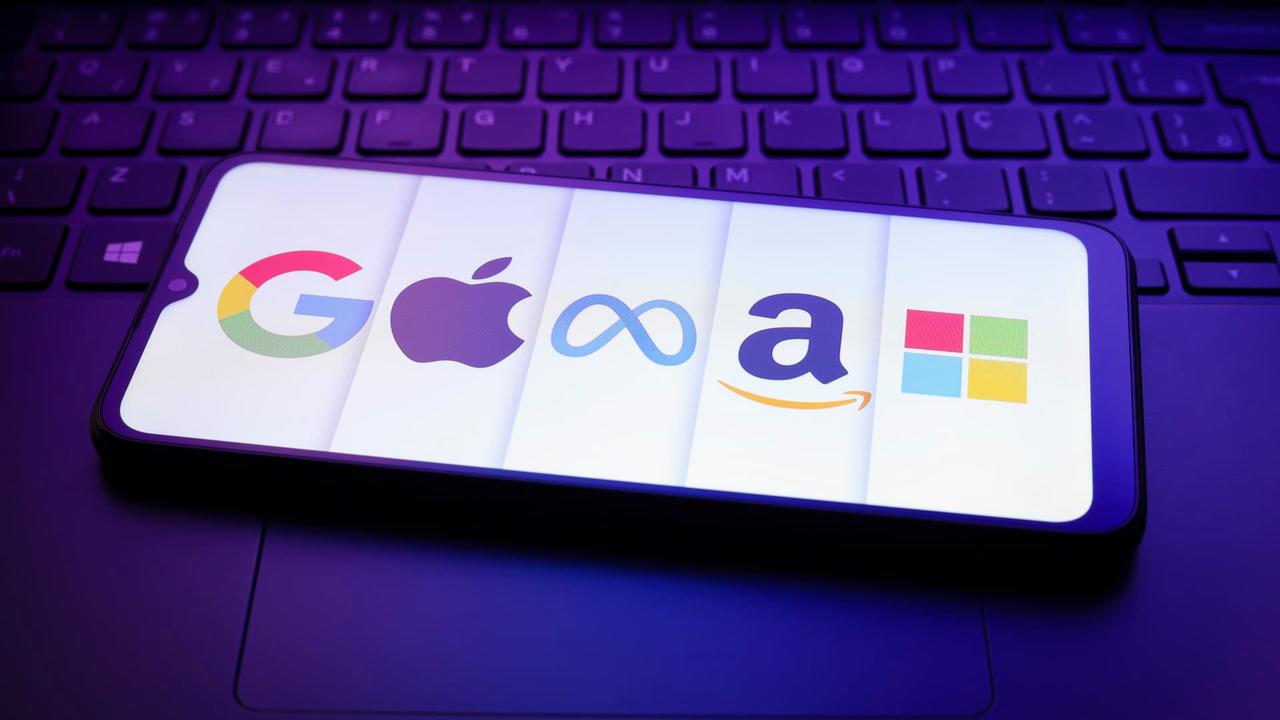
Source: CNBC
While Microsoft is poised to join Nvidia in the $4 trillion club, it's worth noting that other tech giants are also making significant strides in AI. However, Microsoft's closest competitor, Apple, faces challenges due to current U.S. trade policies and its relative lag in the AI race
4
.As the AI revolution continues to unfold, Microsoft's strategic positioning and robust growth in cloud and AI services make it a frontrunner in the race to the next major market cap milestone. The company's ability to maintain this momentum will be crucial as it navigates the evolving tech landscape and competitive pressures in the coming years.
References
Summarized by
Navi
[2]
Related Stories
Recent Highlights
1
Google launches Gemini 3 Flash as default AI model, delivering speed with Pro-grade reasoning
Technology
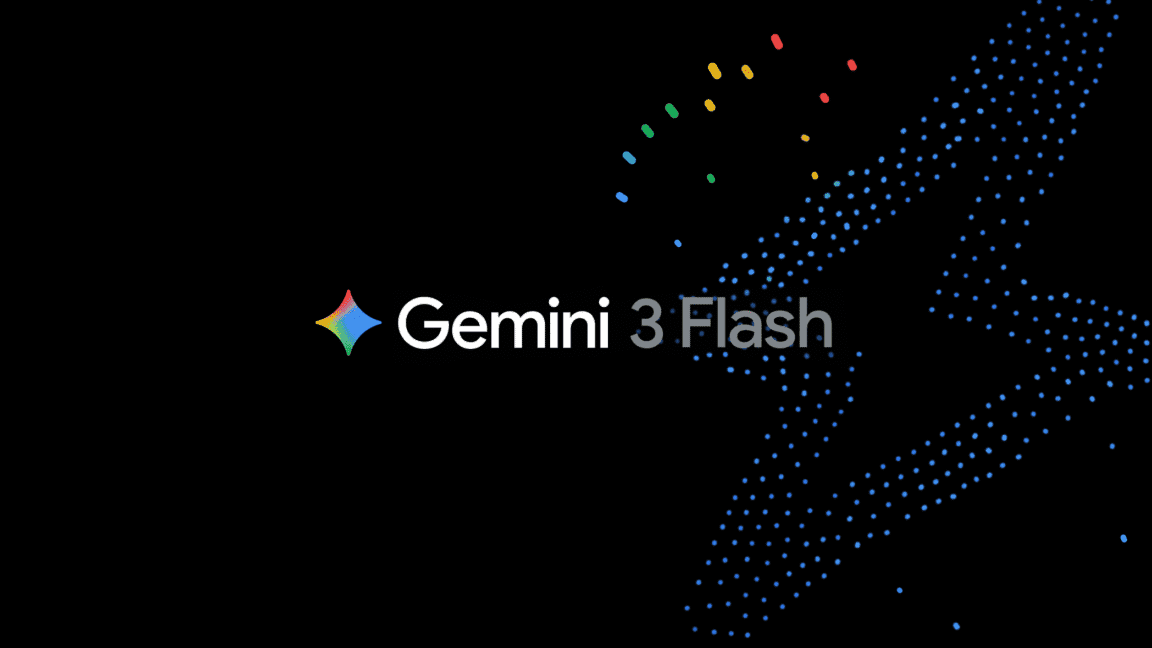
2
OpenAI launches GPT Image 1.5 as AI image generator war with Google intensifies
Technology

3
OpenAI launches ChatGPT app store, opening doors for third-party developers to build AI-powered apps
Technology

